Gas-Powered Leaf Blowers: the End is Nigh
Just in time for autumn, a guide to what you need to know about the most polluting form of machinery still in legal use in the US. It won't be for long.
This is a one-time post to pull together resources, links, and info on a topic I’ve followed for a long time. Let’s start with a brief quiz.
Check out the two photos below. One, of chronic congestion on freeways in my Southern California homeland. The other, of familiar modern “gardening” practices.
Which do you think is overall a greater contributor to certain kinds of air pollution, carcinogenic emissions, lung disease, and hearing loss, in our nation’s most populous state? (Both photos via Getty Images.)
Above, a defect of modern urban life.
Below, another one—which is much more easily correctable.
By the way I’ve posed the question, you already know the answer.
Pound for pound, gallon for gallon, hour-for-hour, the two-stroke gas powered engines in leaf blowers and similar equipment are vastly the dirtiest and most polluting kind of machinery still in legal use.
According to the California Air Resources Board (CARB), the two-stroke leaf blowers and similar equipment in the state produce more ozone pollution than all of California’s tens of millions of cars, combined.
And according to the federal Environmental Protection Agency, two-stroke engines expose their operators to unusually high levels of carcinogens, including benzene and other dangerous substances. From an EPA paper:
“A more cogent concern is their [two-stroke engines] potential as a source for air toxic exposure to operators. Laborers in the landscape industry frequently operate these devices for extended periods, thus exposing themselves to high concentrations of exhaust gases over a prolonged period of time.
”Since the exhaust gases consist of large fractions of unburned gasoline, there is a likelihood that workers are being adversely exposed to benzene, 1,3-butadiene, and other possible toxic compounds [including formaldehyde, acetaldehyde, particulates, and poly-aromatic hydrocarbons] contained in gasoline.
”Toxic compounds produced during combustion may also present a hazard.”
How can such little engines do so much damage? It’s all about technological progress, and the lack of it:
Over the past 50 years, gasoline engines for trucks and automobiles have become so much more efficient that they have reduced most of their damaging emissions-per-mile by at least 95 percent. This is not even to mention the rapid onset of electric-powered vehicles. Per the EPA, here is the trend for overall U.S. emissions since 1990, with a significant part of the improvement coming from cars and trucks:
Two-stroke engines, by contrast, are based on long-obsolete technology that inefficiently burns a slosh of oil and gasoline, and pumps out much of the unburned fuel as toxic aerosols. If these engines were shown on the chart above, their emission levels would essentially be an unimproving flat line. They’re the basis of noisy, dirty scooters and tuk-tuks in places like Jakarta, Hanoi, Manila, and Bangkok, where they’re being phased out as too polluting.
Using a two-stroke engine is like heating your house with an open pit fire in the living room—and chopping down your trees to keep it going, and trying to whoosh away the fetid black smoke before your children are poisoned by it.
But these machines persist in American landscaping because they are cheap. And because—to be brutally honest—the people paying the greatest price in much of suburban American are the hired lawn-crew workers.
Those workers are convenient to hire, at the moment. But they are not likely to be in the neighborhood 10 or 15 years from now, when they are deafened, or have lung disease, or need other forms of care as the worst long-term health consequences kick in.
Here is the four-point summary and guidebook to all the links and information included below.
Gas-powered leafblowers seem like a niche concern, but they represent a significant public-health challenge. From an air-pollution point of view, avoiding them is one of the easiest single steps householders can take to reduce the damage they do. And hearing loss, especially among lower-wage people, is one of America’s fastest-growing public health threats.
You may be “annoyed” by a leaf-blowing crew working five households away. The crew members are earning a living at the moment, but they are likely to suffer permanent hearing damage, which leads to many other problems.The use of damaging lawn equipment is an environmental-justice issue. By tolerating it, householders are saying: It’s not really my problem, if these workers are deafened and exposed to benzene and high PM2.5 emissions. At least my lawn looks neat! And the bills are low. Plus, I can be away from the house when the noisiest blowing is going on.
The noise produced by two-stroke engines really is different from other sounds. New acoustic research shows that its distinctive low-frequency noise penetrates vastly further than other machine-generated sound waves. It goes through solid walls.
There is an obvious, rapidly improving alternative. That is battery-powered equipment (to say nothing of rakes). It’s following the worldwide trend in becoming cheaper, more powerful, and more practical. Here’s one of many illustrations of the price/performance/ power improvements in batteries.
If batteries can power a multi-ton F-150 truck, it is fatuous for landscapers to say that they aren’t strong enough for a dozen-pound leaf blower.
That’s the summary. Now, here are some references, which are the main purpose of this entry:
For an overall guide to these issues, please see this Atlantic article; this site from the civic organization Quiet Clean DC; and these two pages (here and here), with many other references.
For some other organizations working on this issue, please see Quiet Communities, Quiet Clean Seattle, Noise Free America, and the many links they provide.
For why dealing with this gratuitous source of pollution is not a “first world problem” but instead a question of environmental justice for hired lawn crews, please see this entry—which, to be clear, is from me;
For why the noise from gas-powered leafblowers is uniquely penetrating, please see this acoustic study, and this explanation from an earlier article. Summary:
“Gas-powered blowers produce far more ‘sound energy’ in the low-frequency range. This may seem benign—who doesn’t like a nice basso profundo?—but it has a surprising consequence.
“High-frequency sound—a mosquito’s buzz, a dental drill—gets your attention, but it does not travel. It falls off rapidly with distance and struggles to penetrate barriers. If you’re in the next room, you may not hear it at all.
“By contrast, low-frequency noise has great penetrating power: It goes through walls, cement barriers, and many kinds of hearing-protection devices. The acoustic study found that in a densely settled neighborhood, a gas-powered blower rated at, say, 75 decibels of noisiness can affect up to 15 times as many households as a battery-powered blower with the same 75-decibel rating.”In 2018 the D.C. City Council voted unanimously in favor of a three-year phased-in ban on gas-powered blowers. That vote came after support from Advisory Neighborhood Commissions all across the District, and on the basis of testimony you can read here. The D.C. changeover will take effect on January 1, 2022. You can read more about it here.
For a list of companies making battery-powered equipment, start here and prowl around. We are fans of the EGO line of battery equipment, which we have bought and used.
We look back in (disapproving) wonder at the citizens of turn-of-the-century New York and Chicago, who allowed horse manure to pile up on their streets by the countless tons per day. We look back on the U.S. motorists of the 1950s and 1960s, zooming around with no seat belts and fully-leaded gasoline.
Someday soon, people will look back in disapproving wonder on the several-decade toleration of these two-stroke nuisances.
That someday cannot come soon enough.

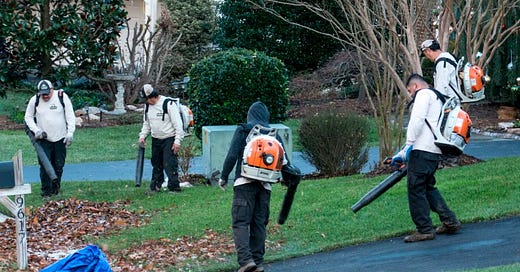




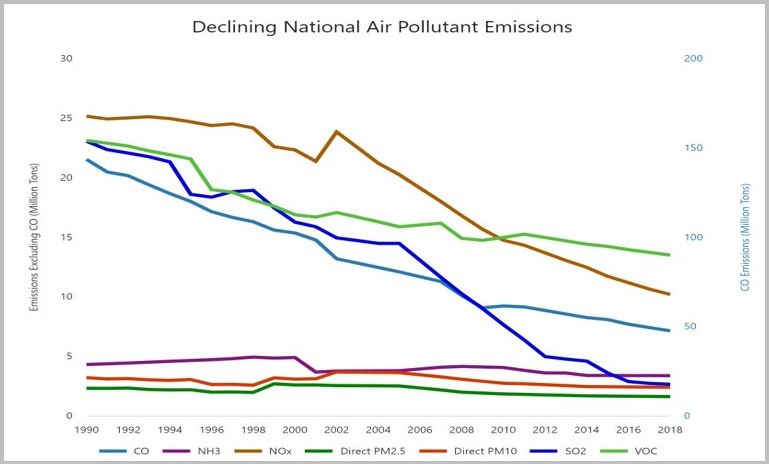
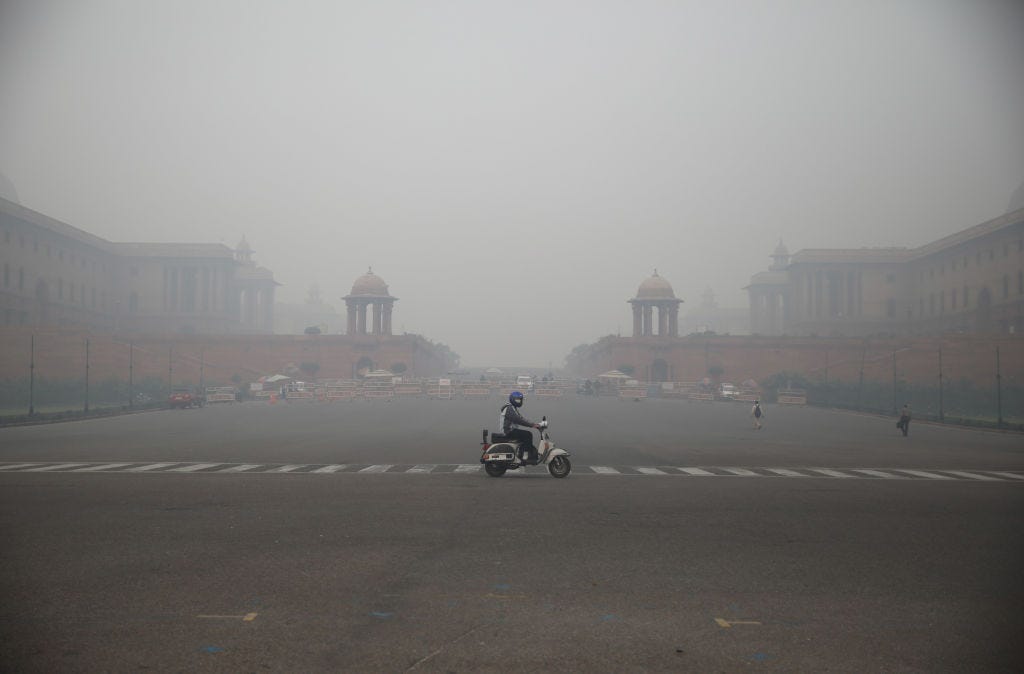
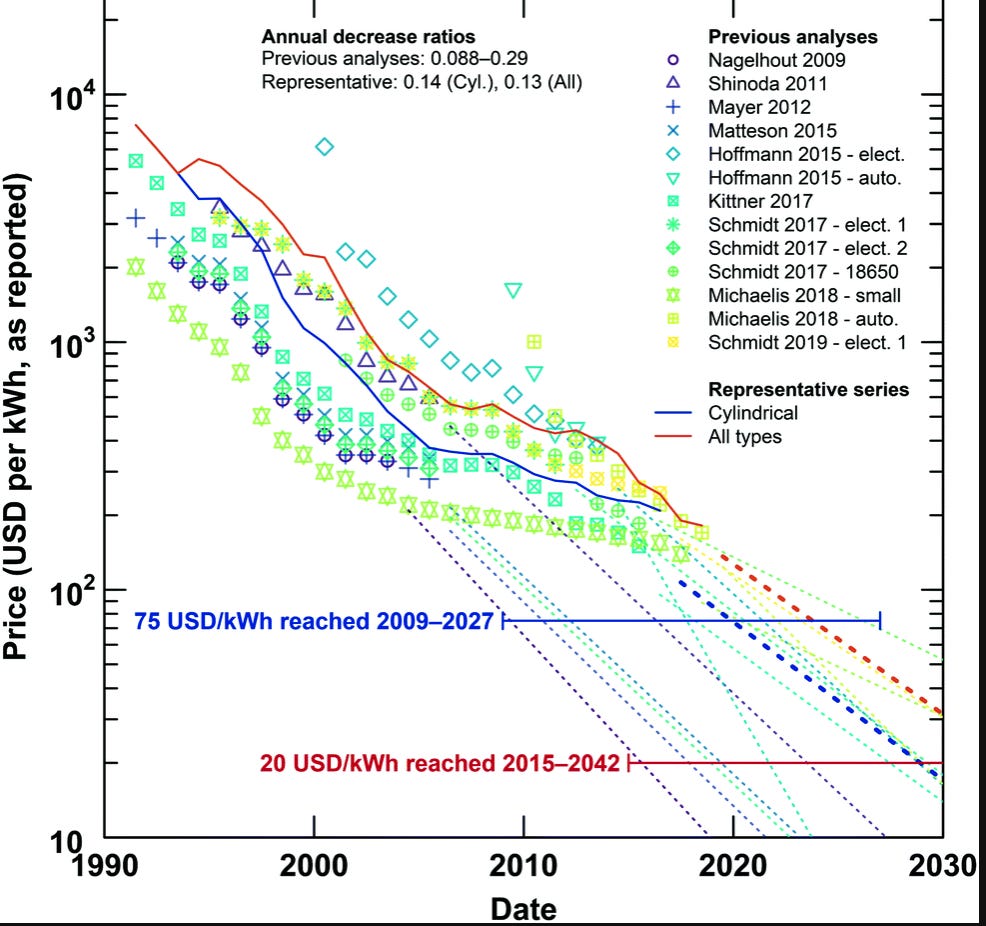
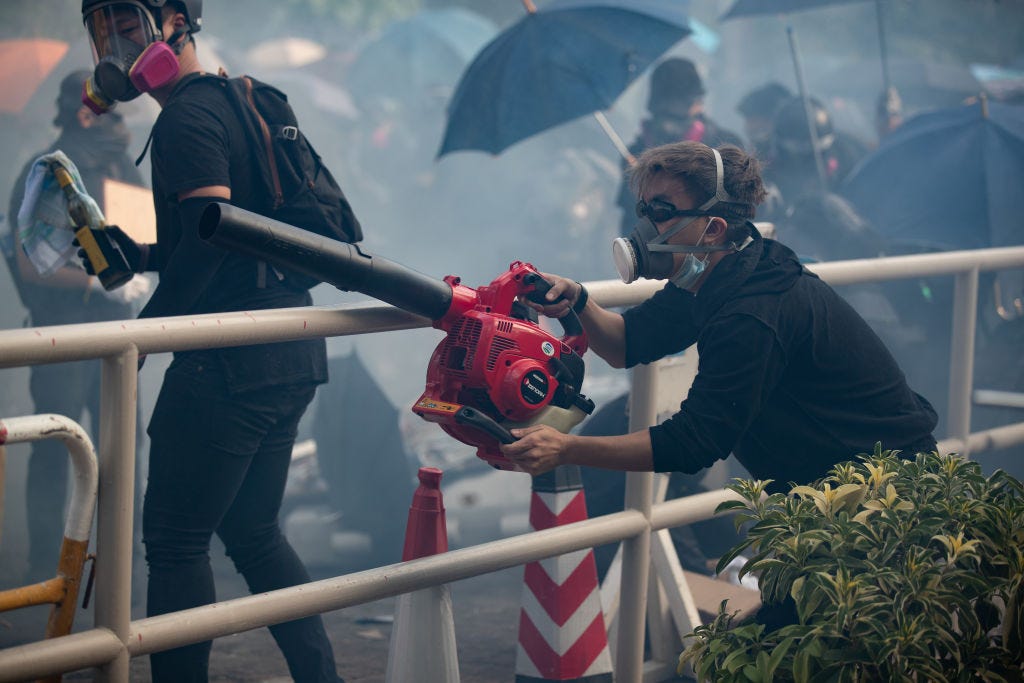
Thank you for an interesting article, I just joined this is my first post.
What I think is important about a forum like this is *the actions* it inspires. Information without follow on is just data, but a lot of folks taking small steps can really shape trends. From this article I learned leaf blowers are more destructive to the environment than cars. That makes me want to make a positive change.
I am fortunate enough to have a gardener. But shortly he and his crew will no longer be using 2-cycle gas operated equipment on my yard as a condition of service. I will have a discussion with him about alternatives and I will fund a battery-based equipment upgrade including a portable charging solution that will work from his truck.
But one thing is clear from looking into this, there are very few capable (professional quality, durable, long run time) battery-operated landscaping equipment providers out there. None of the spec's I can find come close to matching gas powered alternatives.
I think until there are some solutions that match existing products (performance, reliability, durability), even if they are more expensive, there will be a lot of push back about moving this industry into a more green posture.
Kudos, Jim, for your efforts in this realm, but here's the item I saw earlier tody that got me started on a more elaborate comment:
'Are leaf blowers bad for us?' » Yale Climate Connections
http://yaleclimateconnections.org/2021/01/are-leaf-blowers-bad-for-us/
Since it does reference your contributions to the cause, I hope the source is not an irritation (I think they still believe in science in New Haven...); however, I am guessing your alma mater published this before your first public writings on the subject:
https://www.thecrimson.com/article/2017/3/28/landscape-services-leaf-blowers/
All that said, I am sad to say that the towns in Central Massachusetts are too conservative to embrace this goals, and it's an equally difficult suggestion to get considered by our HOA, but now I'm wondering if this company that I just found in Concord, https://www.ecoquietlawncare.com/, could make a case to local landscapers.